UC Gardening Blogs
Gardeners and Poetry
When Jennifer encourages us to submit pieces of writing to the UCCE Master Gardener Blog, “Under the Solano Sun”, I think most of us don't immediately jump onto the idea of writing a poem. If somewhere along the way, you began to feel that poetry-writing was for someone else, I'd like to offer a tiny writing lesson. Hopefully, you will have fun playing with words and may discover a new talent!
I'd like you to start with writing a cinquain. This form of poem originated with an American poet, Adelaide Crapsey, in the early 1900's. She admired the concise use of words in the Japanese Haiku, and designed the five line cinquain. Each line is carefully counted out in syllables. No rhyming is involved. For our use, let's focus on something in nature, which makes a perfect partnership with all of us who love our gardens. Think of a season, plant, bird, insect, or other garden subject. Next, write down or type all the words you can think of that tell about your topic. Count the syllables of each. Your topic can be the title, but might not be needed in the five lines of the poem. Then, you are ready to plug into the cinquain format:
Line 1-2 syllables
Line 2-4 syllables
Line 3-6 syllables
Line 4-8 syllables
Line 5-2 syllables, synonym for Line 1
Editing is part of the process. Let your writing piece sit for a day or two. Your brain is still working on it, even if you don't think so. When you come back to it, change it around if you want to.
When I taught second grade, I used the cinquain writing lessons when my young students were learning about syllables. Counting, clapping, tapping your chin, snapping –all were techniques to help them hear the rhythms and patterns that are basic to our English language. As you begin to play with cinquain writing (hopefully?), try saying your words aloud, clapping or tapping the syllables you hear. Your chin will drop down just a bit with each syllable. Words can be magical, eliciting memories or creating videos in our imaginations. With Jennifer's permission, I hope you will submit your favorite cinquain efforts to our MG Blog!
Sample Cinquain:
“Zygocactus Cinquain”
Vibrant
Christmas cactus
Magentas, pinks, whites, reds
Winter gloom dispelled with bright hues
Brilliant
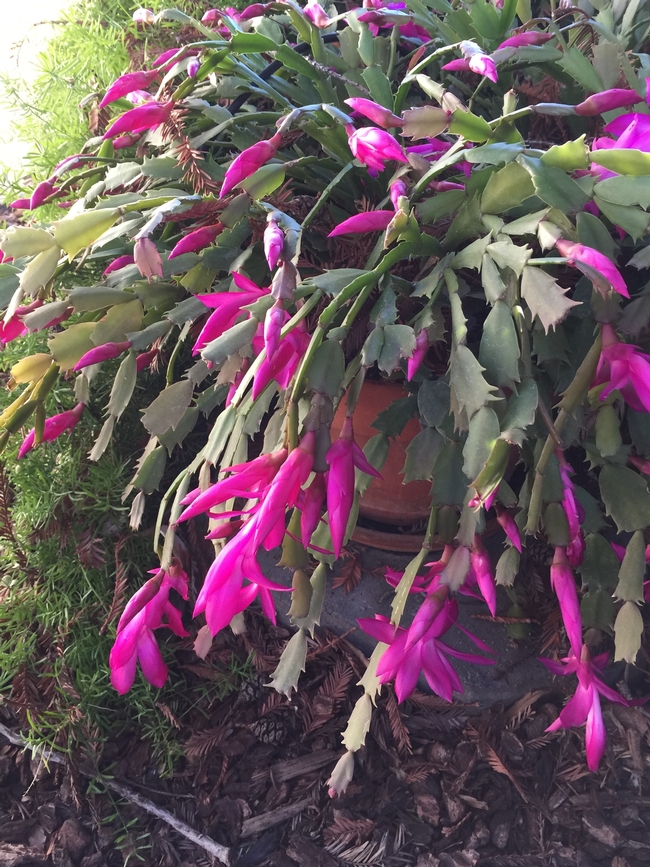
zygocactus martha blog
Meet and Greet 'Watermelon' at the Bohart Museum of Entomology
Have you ever said "Hi" to a watermelon? No? Well, you can "meet and greet" a watermelon at the...
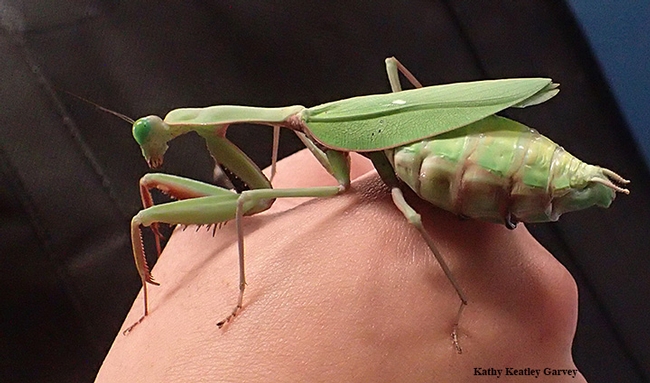
This praying mantis, nicknamed "Watermelon," is an adult female Australian rainforest mantis, Hierodula majuscola, part of the collection of UC Davis entomology student Lohit Garikipati. He will display this mantis and others from 1 to 4 p.m., Saturday, Feb. 17 at the Bohart Museum of Entomology. (Photo by Kathy Keatley Garvey)
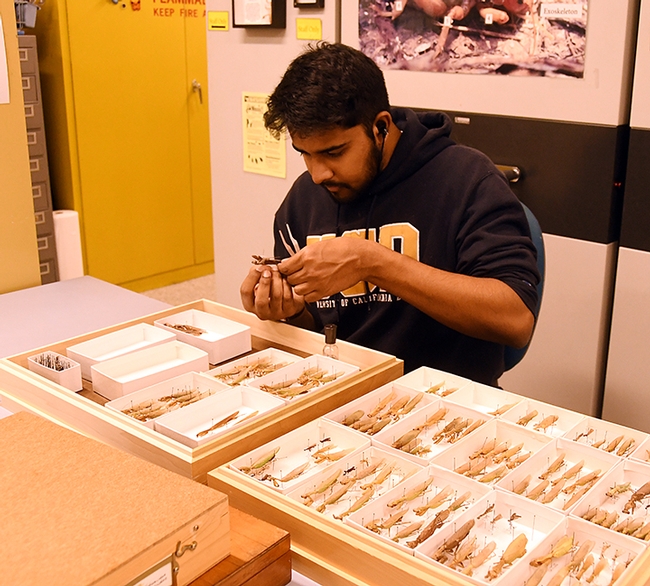
As a Bohart Museum associate, UC Davis entomology student Lohit Garikipati works on a tray of praying mantis specimens. (Photo by Kathy Keatley Garvey)
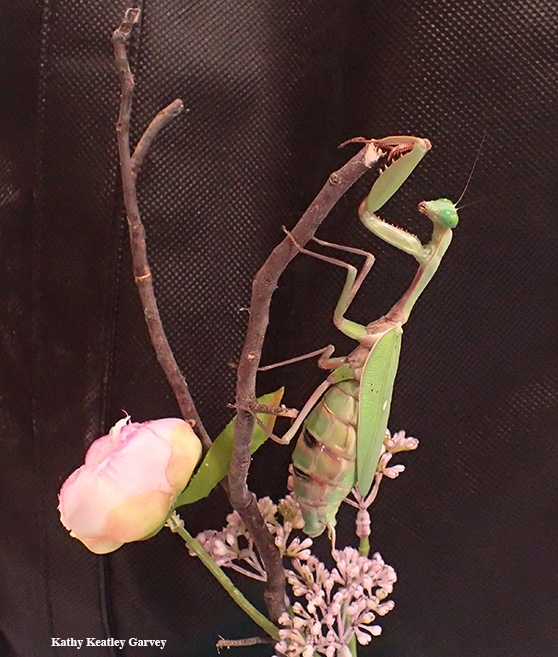
The red and green coloration on this Australian rainforest mantis, Hierodula majuscola, led Lohit Garikipati to name her "Watermelon." (Photo by Kathy Keatley Garvey)
Maj Rundlöf Seminar: How Pesticide Exposure, Floral Resources Drive Bumble Bee Diversity
What better day to deliver a seminar on bumble bees than on Valentine's Day? That's when ecologist...
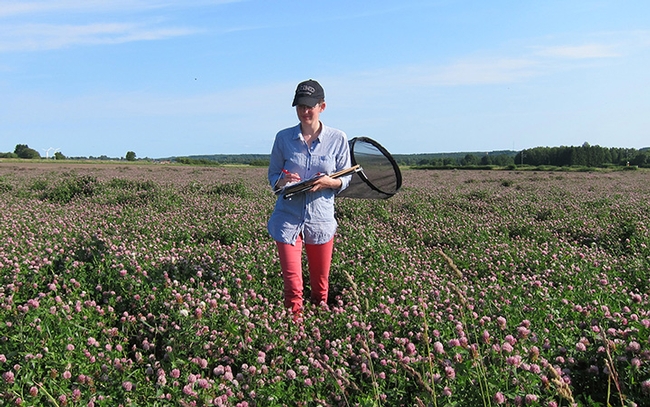
Researcher Maj Rundlöf working in red clover seed field in Skåne, southern Sweden. (Photo by Christian Krintel)
Kissing bugs are not your valentine
Conenose or ‘kissing bugs' (Triatoma spp.) are in the Reduviidae family, a group of insects...
Honey Bees Think It's Spring on the UC Davis Campus
Spring doesn't "spring" on the University of California, Davis campus. Sometimes it skitters,...
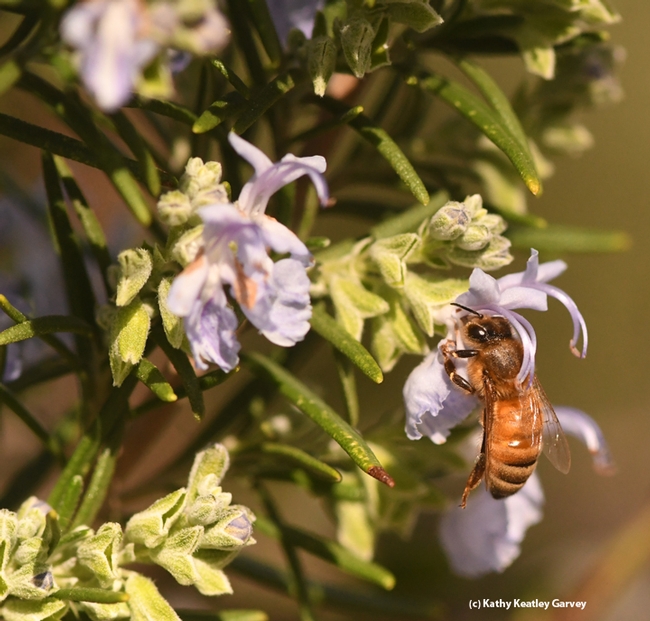
A honey bee nectars on a rosemary blossom on Feb. 9 on the UC Davis campus. (Photo by Kathy Keatley Garvey)
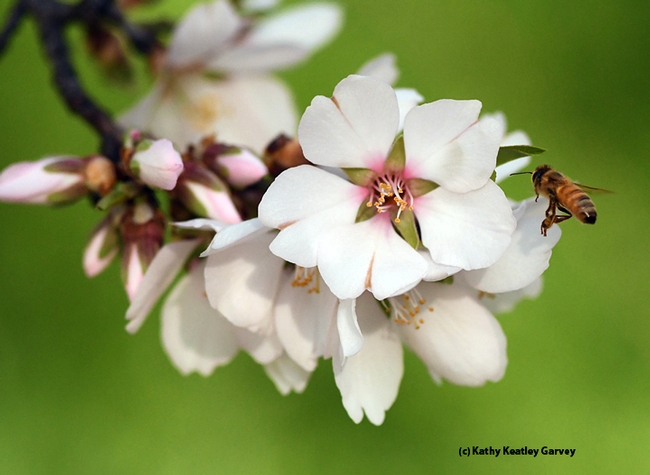
Pollen-packing honey bee heads for an almond blossom on Feb. 9 on the UC Davis campus. (Photo by Kathy Keatley Garvey)
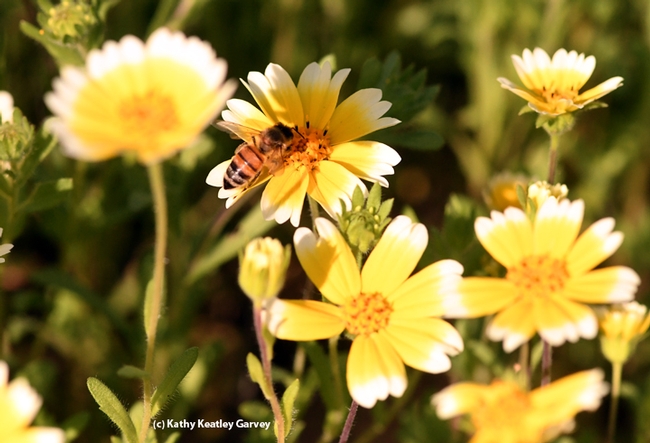
A honey bee singles out a tidy tip blossom Feb. 9 on the UC Davis campus. (Photo by Kathy Keatley Garvey)



